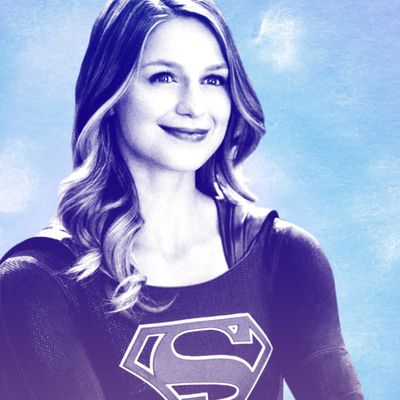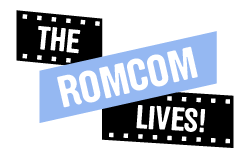
At the tail end of Supergirl’s mid-season finale, the titular Kryptonian heroine has a moment alone with a fellow superpowered alien, the Daxamite Mon-El. They’ve just survived yet another titanic tussle with the forces of evil, and Mon-El is in a hospital room, recuperating from a near-death experience. “So, are we gonna talk about what happened?” Supergirl — known to her civilian comrades as Kara Danvers — asks. It’s the time in an installment of a superhero story when one typically expects an expository debrief on the big battle, and that’s certainly what Mon-El thinks is about to go down when he replies, “Yes, I wanna hear all about how you chased that missile down.” But Supergirl is not a traditional superhero story, and Kara has a more important matter on her mind: a kiss.
“No, I mean, are we gonna talk about what happened between us” — and here, she points back and forth at her own chest and his, swaying nervously — “while you were dying?” The pair had shared a lip-lock just before Mon-El was knocked out by poison gas, seemingly resolving many episodes’ worth of will-they-or-won’t-they tension. Alas, Mon-El seems to have no memory of the kiss and replies, “I … what? What happened?” Oh no! Kara squirms and, adorkable superhuman that she is, improvises a silly white lie: “You drooled!” They laugh, but our hearts break for poor Kara. When will she finally get the love she deserves?
The whole sequence is more Bridget Jones’s Diary than Batman v Superman, and that’s entirely by design. Indeed, the infusion of romantic comedy into the superhero genre is arguably what has made Supergirl and its fellow caped-crusader shows on the CW such hits. Arrow, The Flash, Supergirl, and DC’s Legends of Tomorrow comprise a quartet colloquially known as the Berlantiverse, named for their executive producer, Greg Berlanti. He was making rom-coms long before he was doing small-screen spandex, having directed 2000’s The Broken Hearts Club and 2010’s Life As We Know It, and acted as showrunner for the rom-com-influenced teen dramas Dawson’s Creek and Everwood. By carrying over the lessons he learned on those projects, Berlanti is significantly advancing the superhero genre and opening it up to audiences with lower tolerances for CGI beat-’em-ups.
Romance is, of course, not a new concept for superhero fiction. Ever since Clark Kent started pining for Lois Lane, only to see her prefer his tights-wearing alter ego, attraction and rejection have been ongoing motifs in the genre. It’s not even entirely new to televised adaptations of superhero comics — the 1990s ABC curio Lois & Clark: The New Adventures of Superman drew heavily on matters of the heart. But the Berlantiverse shows come at a special time in the eight-decade history of the superhero genre, when it finds itself in the global-entertainment spotlight as never before. As is true of any industry with an expanding supply of product, superhero filmmaking needs to find new audiences if it hopes to survive, and the Berlantiverse provides a useful and surprisingly successful model for attracting them with rom-com tropes. Think of it as a new kind of romantic comedy: a superhe-rom-com, if you will.
The foundations were laid out in the first Berlantiverse show, Arrow, with the introduction of geeky blonde tech expert Felicity Smoak. In season one, Smoak provided much-needed levity and romantic tension to protagonist Ollie’s sludge-dark trials and tribulations. The second show, The Flash, brought even more rom-com-y business by devoting just as much attention to the question of whether Barry Allen (the titular Flash) would hook up with longtime crush Iris West as it did to whether our hero could defeat baddies. The fourth, Legends, is fixated on simmering dalliances between quirky misfits like the Atom and Hawkgirl. Each plays around with different romantic-comedy tropes: Arrow shows us the struggle of an emotionally unavailable stoic attempting to be vulnerable, Flash shows a lead who can’t quite find the balance between work and love lives, and Legends has the nervous “he likes me, but does he like-like me?” pining of a high-school love story.
But the third show, Supergirl, is where Berlanti and co-creators Allison Adler and Andrew Kreisberg made the heady brew most potent. Supergirl is so much like a romantic comedy that when its first promo debuted, months before the series premiere, geeks pounced on the fact that it seemed eerily close to an SNL parody of a Black Widow–starring Avengers rom-com. Leaving aside whether such comparisons are good or bad, they were quite accurate: The trailer follows a clumsy single gal in the big city, as she works for a domineering boss and can’t figure out how to tell her crush that she likes him. To the extent that the crime-fighting stuff appeared in the Supergirl trailer, it was primarily there to show us that we’d see a timid woman learn how to actualize herself.
We were not misled, as Supergirl has become astoundingly reliant on rom-com ideas ever since. It is, of course, impossible to ignore the fact that it’s also the only woman-led member of the quartet. The show has rated better with female viewers than most superhero shows, and although we shouldn’t generalize — plenty of men love rom-coms, plenty of women love superheroes, and a ton of people love both — it’s not unreasonable to suspect the creators hoped to achieve a more balanced audience by pulling from the rom-com genre, which has often been targeted at women in a way that superhero fiction hasn’t. Whatever the motivation, the tropes are right there on the surface. Kara is forever trapped between suitors, from maturely chill James Olsen to nerdily anxious Winn Schott and, of course, sweet-but-dumb hunk Mon-El. Romance, of course, does not a rom-com make — such love triangles (and quadrangles) could simply lead us to a prime-time soap territory. But Supergirl is relentlessly light and goofy, thank goodness.
Take, for example, a recent scene in which the core cast gathers at Kara’s apartment for a Thanksgiving dinner with her mom, Eliza, and her sister, Alex. While gently bouncy woodwinds croon, the room is abuzz with confusion and nerves over potential romantic disasters. James and Winn are bickering over which one of them will get to impress Kara by revealing that James is secretly moonlighting as a crime fighter known as the Guardian. Mon-El is flirting with Eliza, but Eliza tells Kara that’s just because he wants to impress his squeeze’s mother. Most important, Alex is working up the courage to tell Eliza that she’s gay and getting a little too tipsy in the process. Just when it looks like all those beans are about to spill, an interdimensional portal opens up over the dinner table, but that isn’t nearly as exciting as all the mix-ups and mishegoss that came just before.
You’d never find a scene like that in any superhero franchise outside the Berlantiverse. Sure, you might see Tony Stark kiss Pepper Potts or witness Batfleck waking up next to a nameless sexual conquest, but those bits are brief and usually played with a certain degree of weighty pathos. Marvel television has given us superhumans who bang, especially in Jessica Jones and Luke Cage, but their romance is rarely comedic. The only other place you’ll find rom-comminess among superheroes is in the vibrant world of fanfic and other fan-created media, where shootouts regularly take a back seat to smooches. Just take a look at the Tumblr tag for “Stucky,” the fan term referring to the romantic pairing of Steve Rogers (a.k.a. Captain America) and Bucky Barnes (a.k.a. the Winter Soldier).
There’s a similar abundance on the tag for “WestAllen,” the term for The Flash’s Barry and Iris. The difference, of course, is that Stucky will never come to be, while WestAllen has been a reality for nearly a dozen episodes. Berlanti and his cohort are pioneers in appealing to a demand for copious love that was previously only satisfied by non-canonical work. Case in point: They’re already lapping their big-screen competitors by not only crafting rom-com pairings, but also expanding into the realm of queer attraction, most notably in the form of Supergirl’s Alex Danvers and her nascent love with erstwhile verbal sparring partner Detective Maggie Sawyer (their term is “Detective Danvers,” in case you were looking for some steamy fic).
One’s mileage may vary as to whether sensual silliness is worth your superheroic viewing time, of course. But if you’re not into it, you have plenty of options available elsewhere. Only the storytellers of the Berlantiverse have figured out how to make this dominant entertainment genre more palatable for people who like to engage with fiction through a lightly romantic lens, be they men or women, straight or queer. Despite a few notable exceptions like Patsy Walker, AKA Hellcat, even the comics that inspire these stories hardly bother with genuine romantic comedy.
That’s a damn shame, because any robust genre deserves creators who expand its boundaries. Superhero fiction has broadly appealing themes — ethical use of power, triumph over impossible odds, the possibility of real altruism — but if you just focus on brawling and brooding, you’re telling audiences who cringe at machismo that the multi-billion-dollar superhero industry isn’t for them. Even if you’re just looking at the bottom line, you have to recognize that the success of the Berlantiverse, which keeps racking up ratings victories, suggests it would only be prudent to pay attention to their secret sauce. The stewards of the superhero tentpoles would do well to stir in a little less Frank Miller and a little more Nora Ephron.


